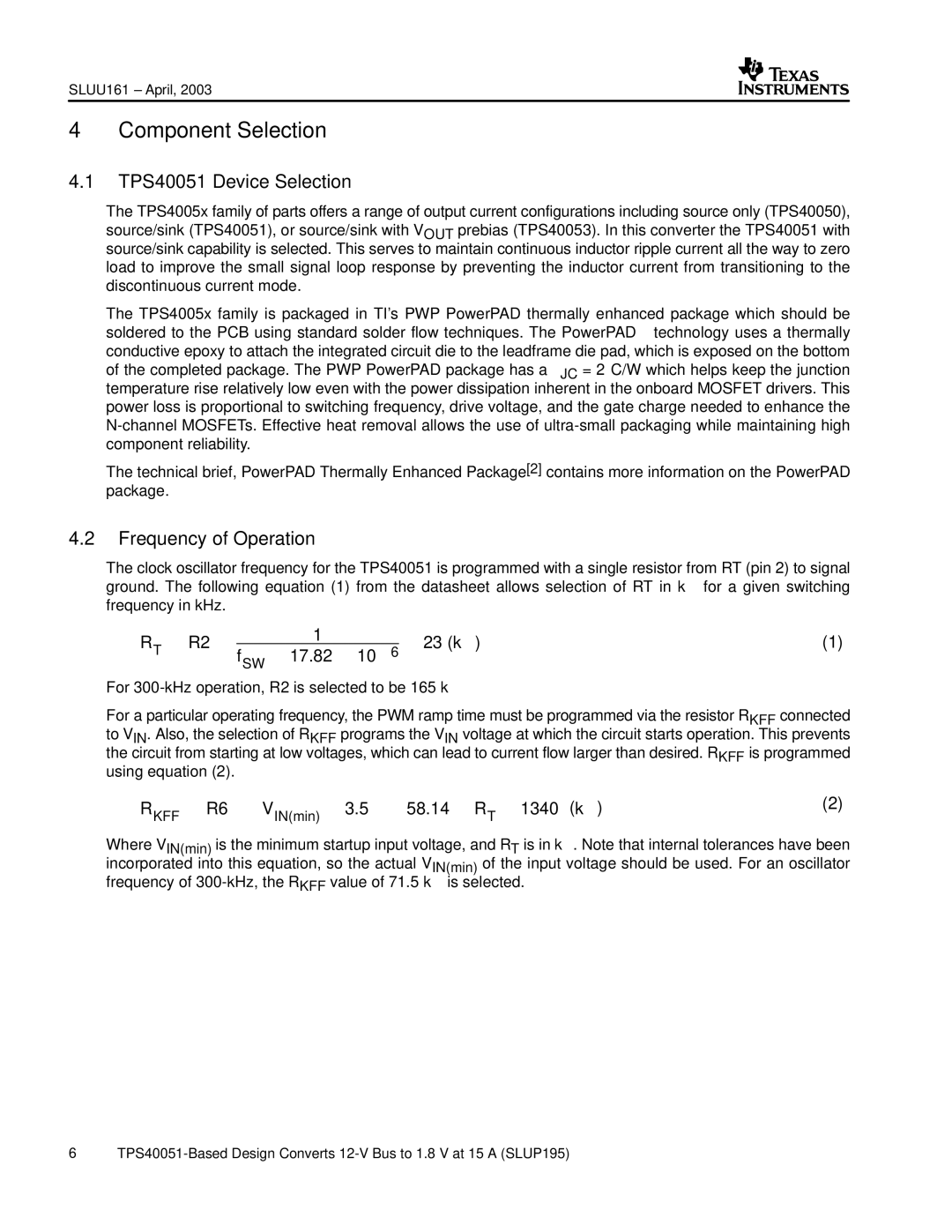TPS40051 specifications
Texas Instruments TPS40051 is a highly integrated, synchronous step-down (buck) switching regulator designed to deliver power efficiently and effectively to various applications. This device is particularly well-suited for powering FPGAs, DSPs, microcontrollers, and other digital devices that require a stable voltage supply with high efficiency.One of the main features of the TPS40051 is its ability to operate from a wide input voltage range of 4.5V to 17V. This flexibility makes it suitable for a variety of power sources, including battery-operated systems and traditional AC/DC power supplies. The output voltage can be adjusted from 0.8V to 85% of the input voltage, making it adaptable to different load requirements and application scenarios.
The TPS40051 employs a constant frequency, voltage mode control scheme, which results in improved transient response and stability. The device operates with a fixed switching frequency that can be set between 100kHz and 1MHz, allowing designers to optimize their designs for efficiency or minimize electromagnetic interference (EMI). The low RDS(on) of the integrated MOSFETs reduces conduction losses, contributing to the overall high efficiency of the solution, often exceeding 90%.
In terms of protection features, the TPS40051 includes overcurrent protection, thermal shutdown, and under-voltage lockout, which enhance the reliability of the system. These features allow the device to maintain safe operating conditions in various scenarios, protecting both the regulator and the load.
Another significant characteristic of the TPS40051 is its ability to operate in a Power Good mode. This feature provides feedback to the system regarding the status of the output voltage, allowing for better system monitoring and control. Additionally, it has an adjustable soft-start feature, which helps prevent inrush current during power-up, further protecting sensitive loads.
The TPS40051’s compact package options and its integration of features make it a flexible choice for designers looking to implement efficient power management solutions. Whether used in industrial, automotive, or consumer electronics applications, the TPS40051’s robust performance and adaptability make it an excellent choice for modern power supply designs.
